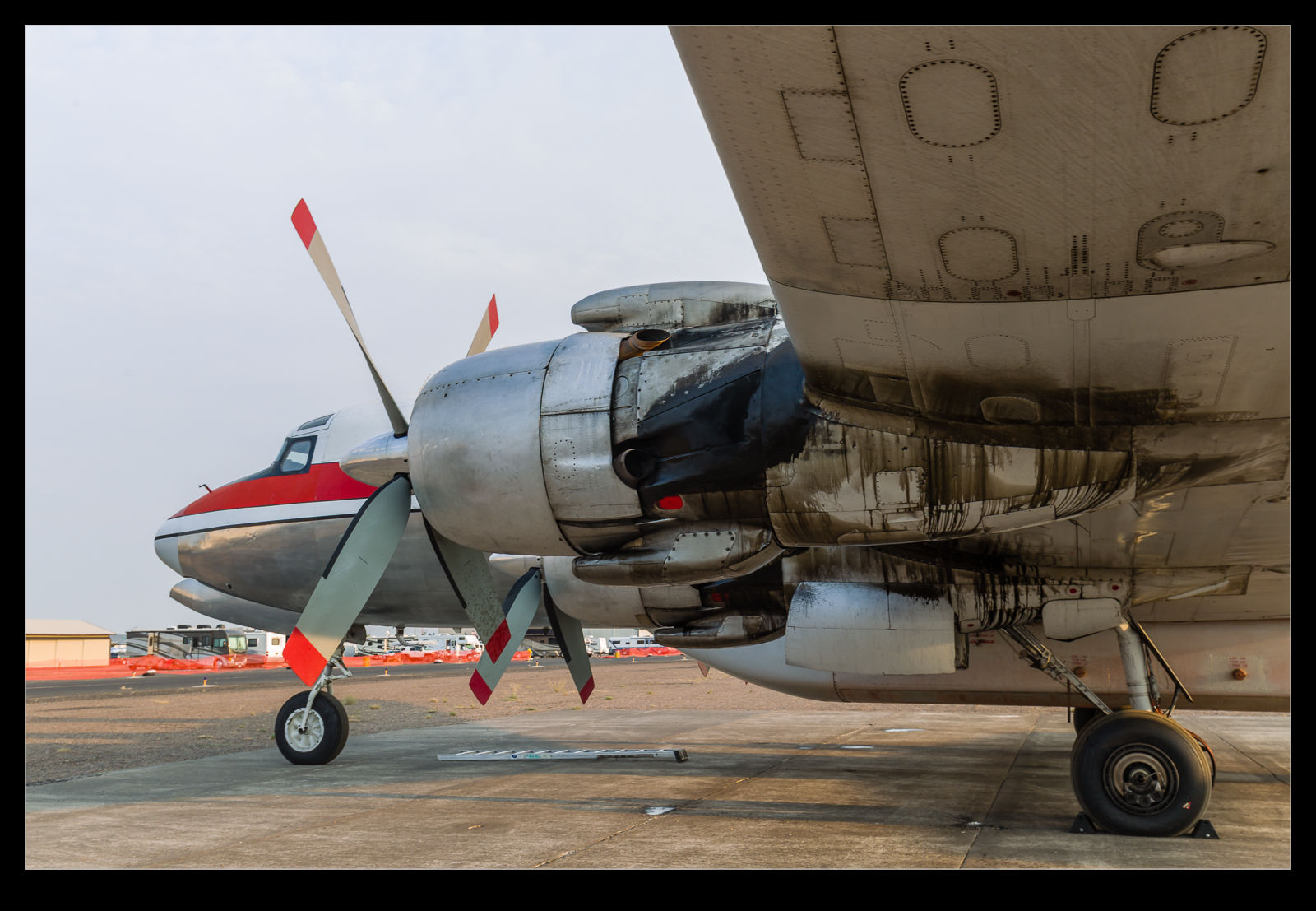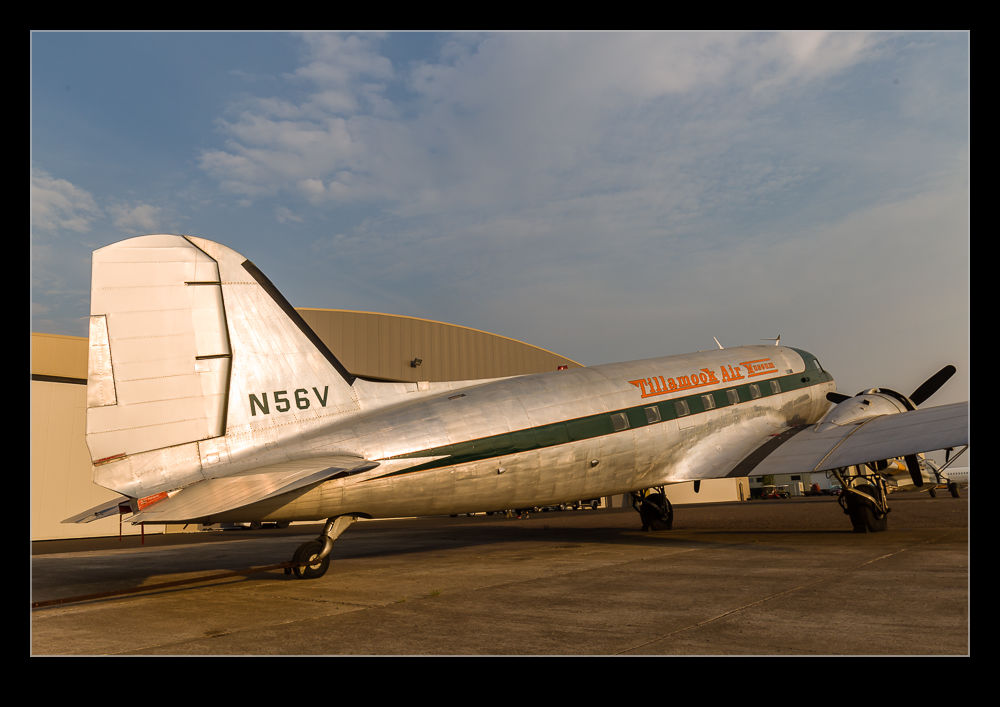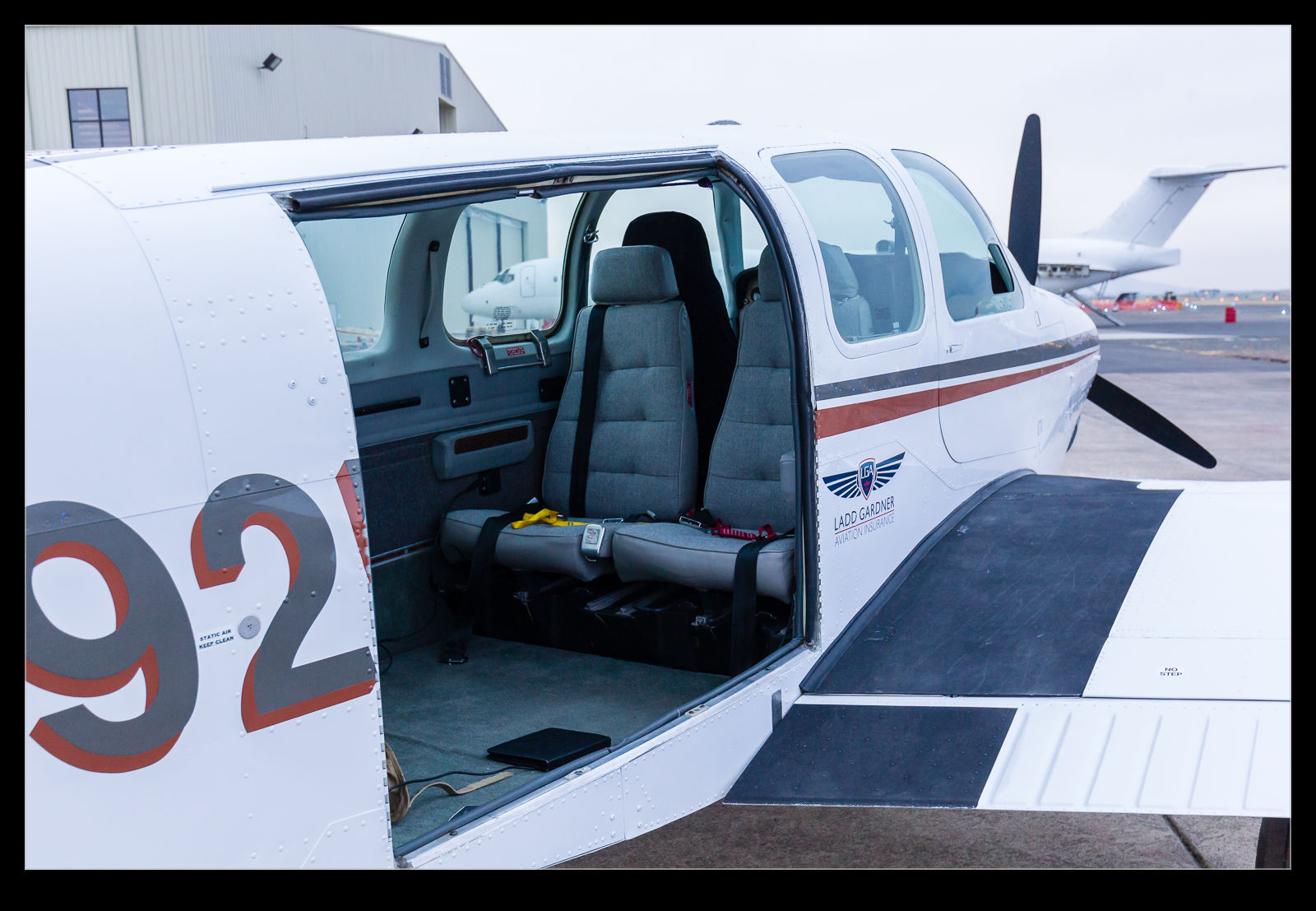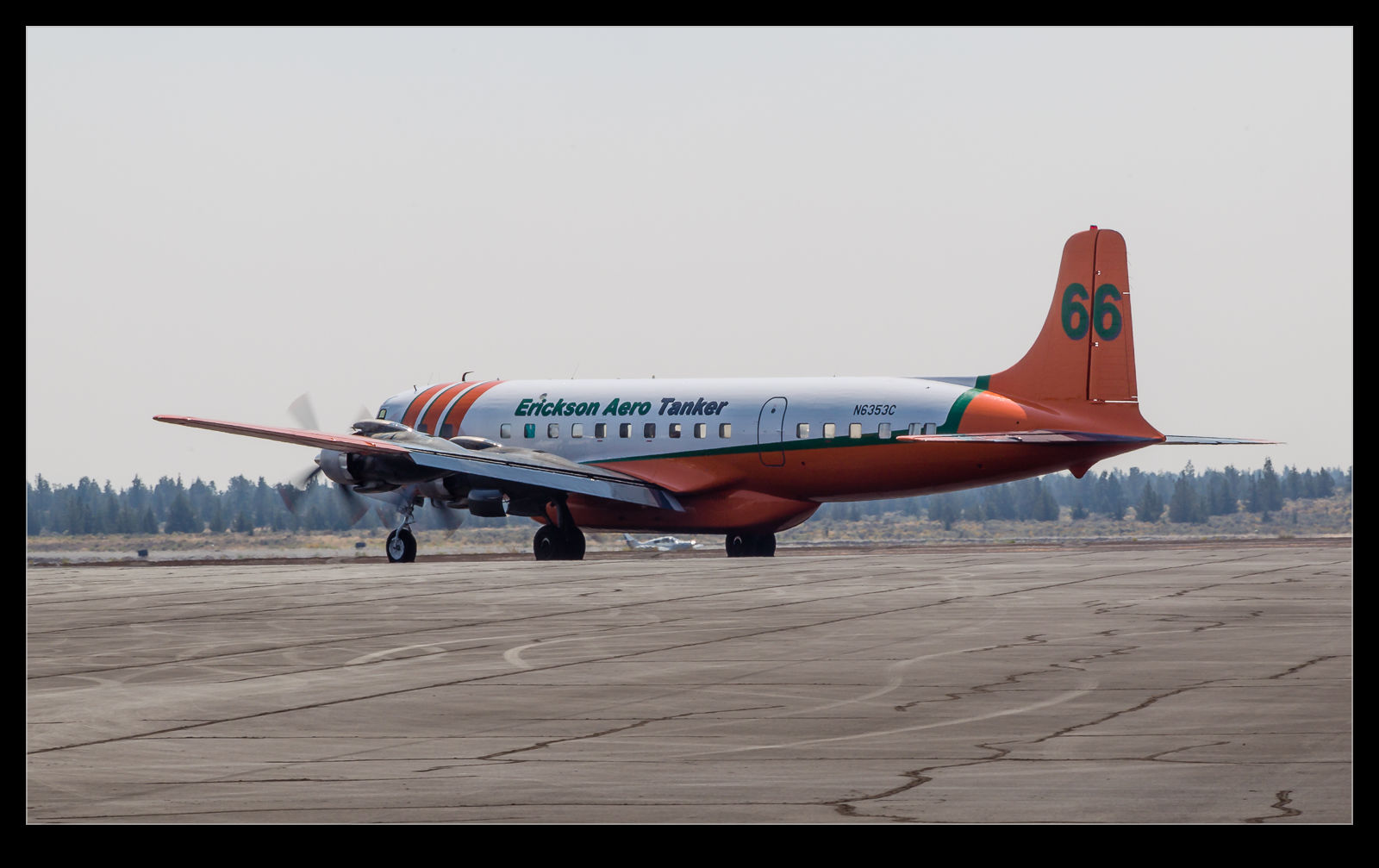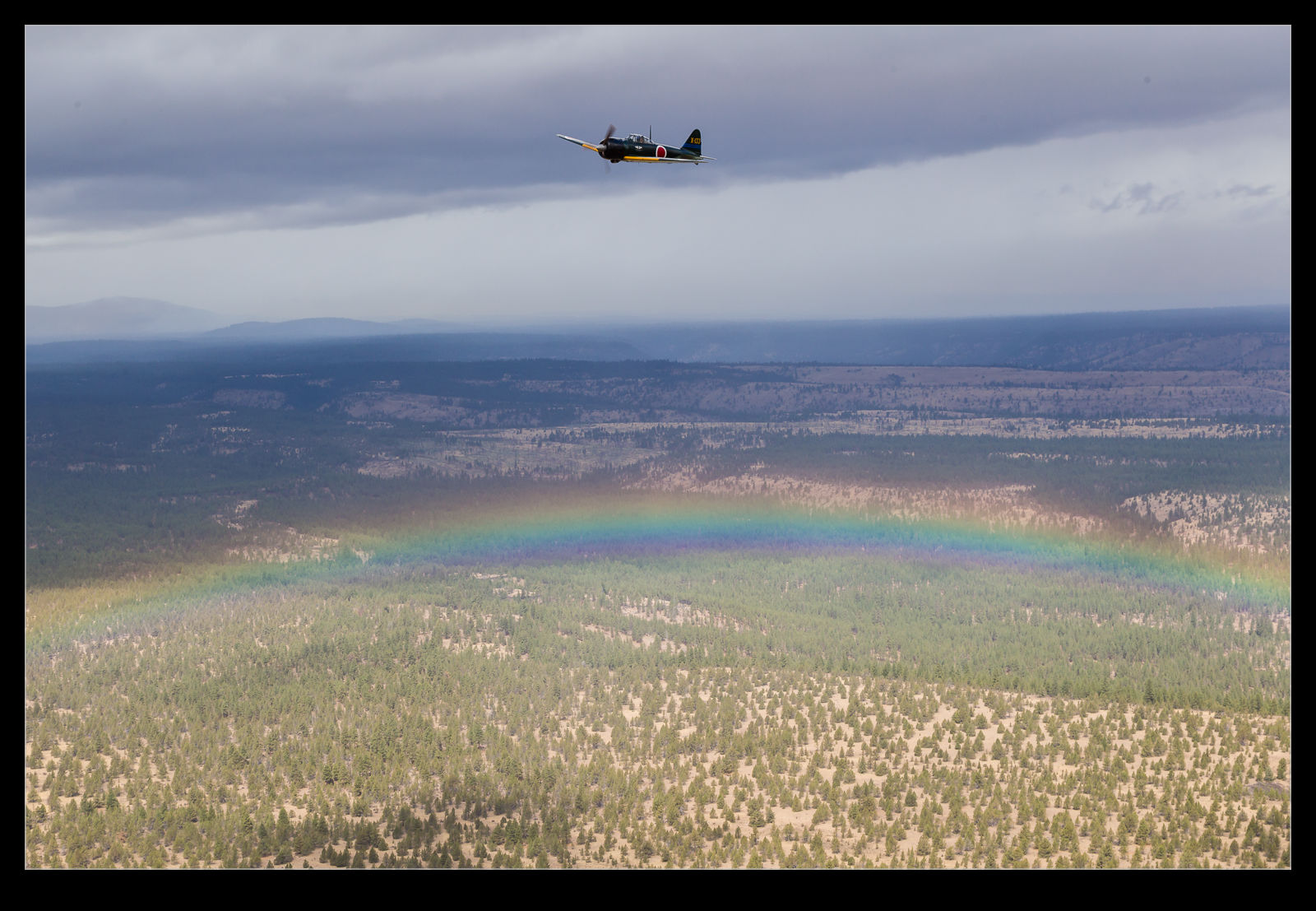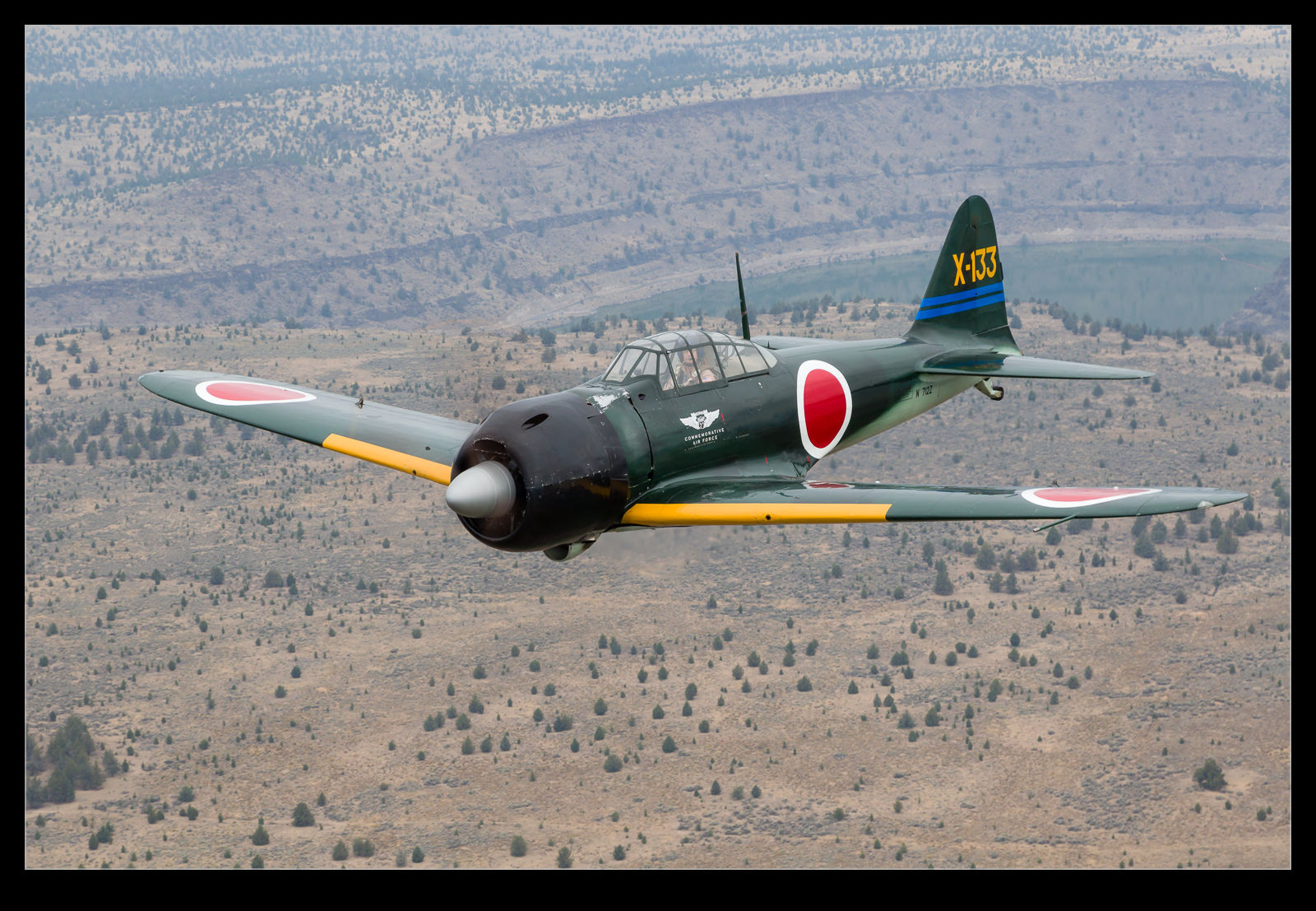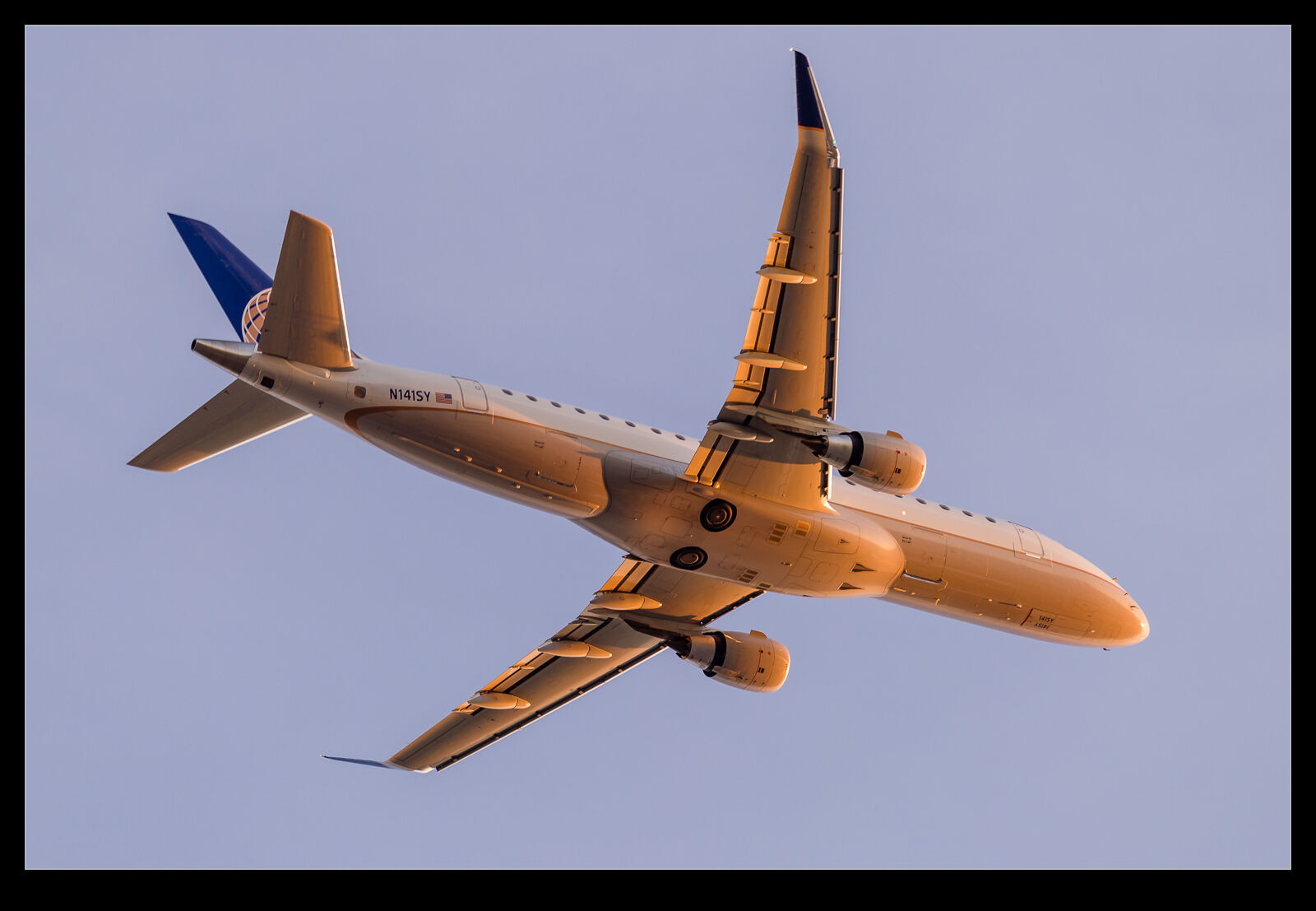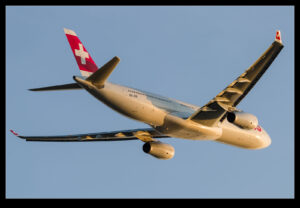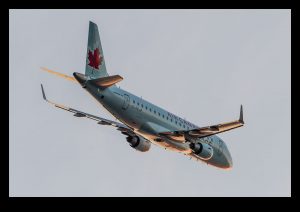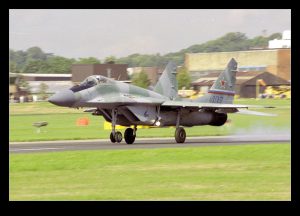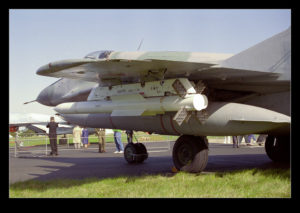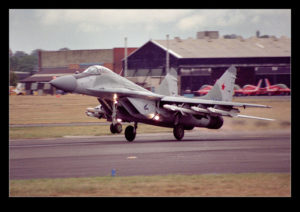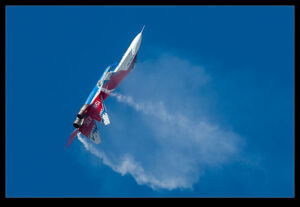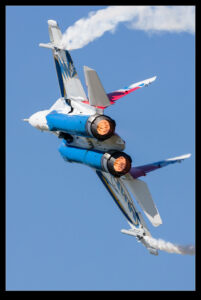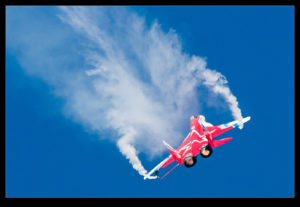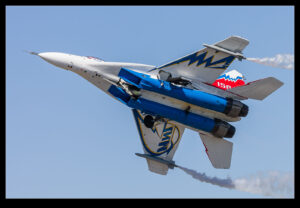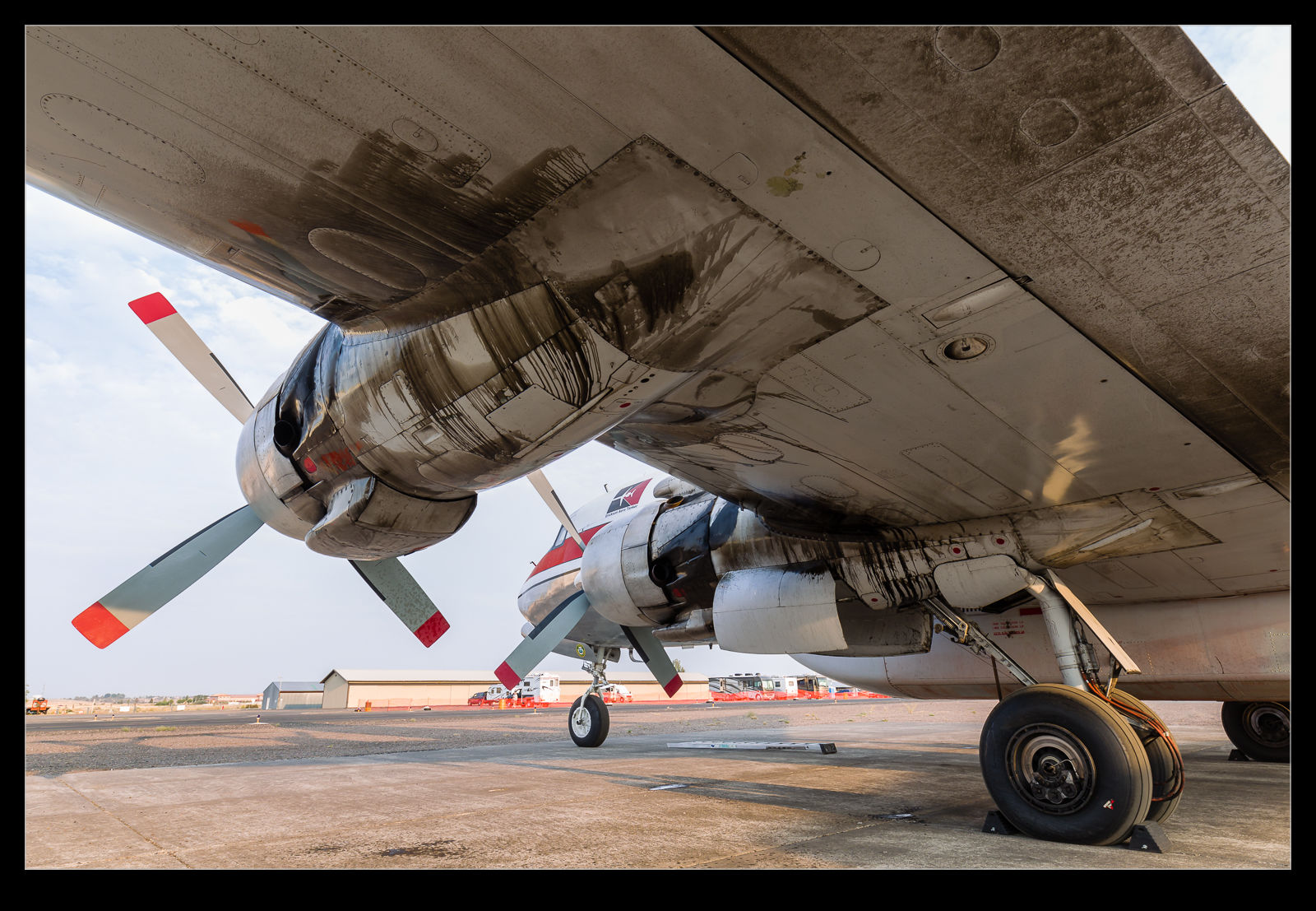 Parked up on the ramp at Erickson’s facility was a DC-7 tanker. It didn’t move while we were there so it became the target of a number of photographers at any one time. I shall show more of it shortly but one thing that caught my attention was the amount of oil on the engine nacelles. Old piston engines are well known for consuming oil at a prodigious rate and this beast was no exception. It seemed to have done a great job of relocating the oil from the internals of the engines to the outside of the nacelles. It made for some great patterns and this was what distracted me for a while as I walked around the aircraft.
Parked up on the ramp at Erickson’s facility was a DC-7 tanker. It didn’t move while we were there so it became the target of a number of photographers at any one time. I shall show more of it shortly but one thing that caught my attention was the amount of oil on the engine nacelles. Old piston engines are well known for consuming oil at a prodigious rate and this beast was no exception. It seemed to have done a great job of relocating the oil from the internals of the engines to the outside of the nacelles. It made for some great patterns and this was what distracted me for a while as I walked around the aircraft.
Tag Archives: aircraft
DC-3 City of Tillamook
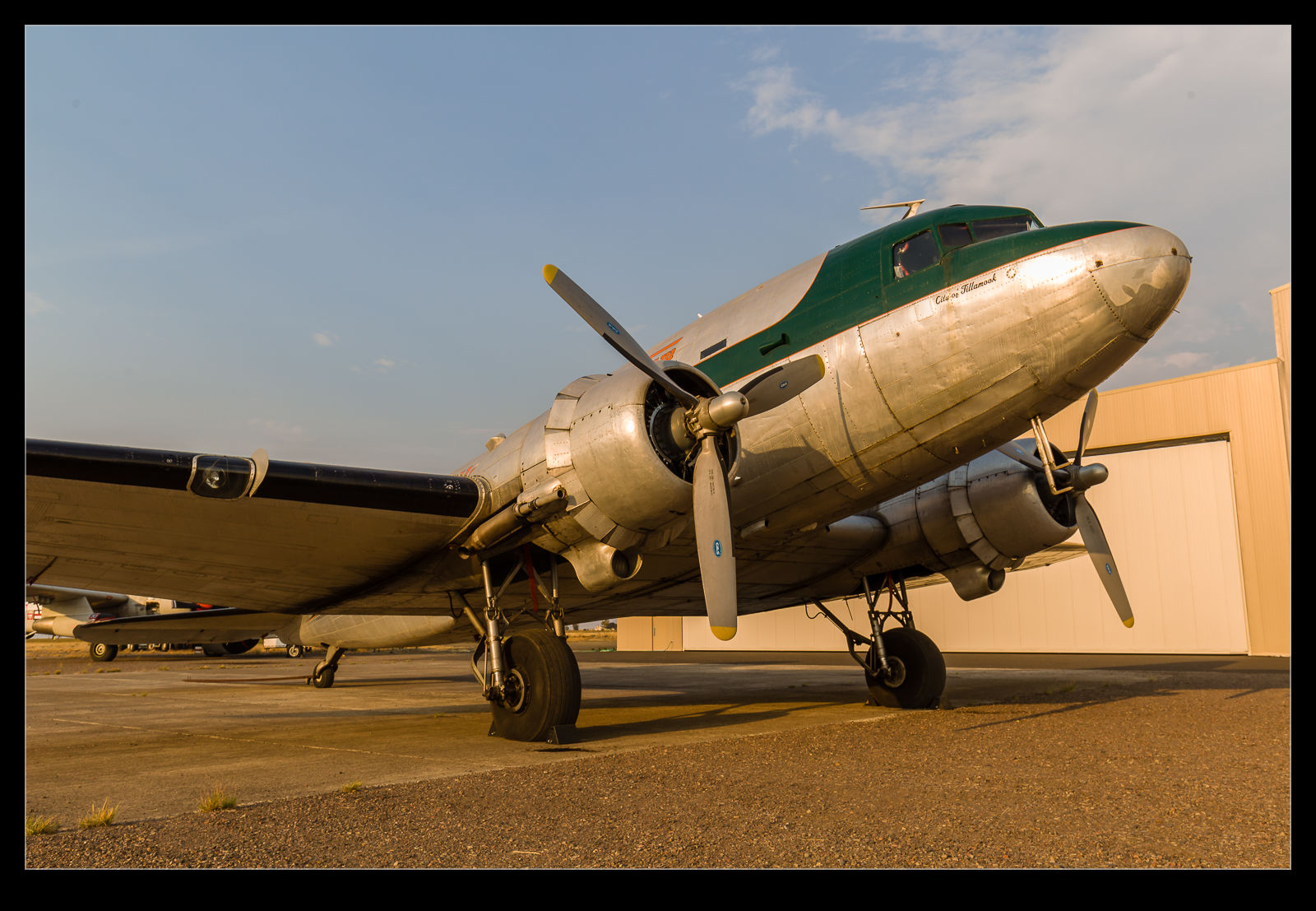 The Erickson collection did not used to be based in Madras. For many years the aircraft were part of the museum at Tillamook. The old airship hangars at Tillamook were their home. While most of the planes have now moved, one of them still bears a name indicative of its past. This is the Douglas DC-3 named City of Tillamook.
The Erickson collection did not used to be based in Madras. For many years the aircraft were part of the museum at Tillamook. The old airship hangars at Tillamook were their home. While most of the planes have now moved, one of them still bears a name indicative of its past. This is the Douglas DC-3 named City of Tillamook.
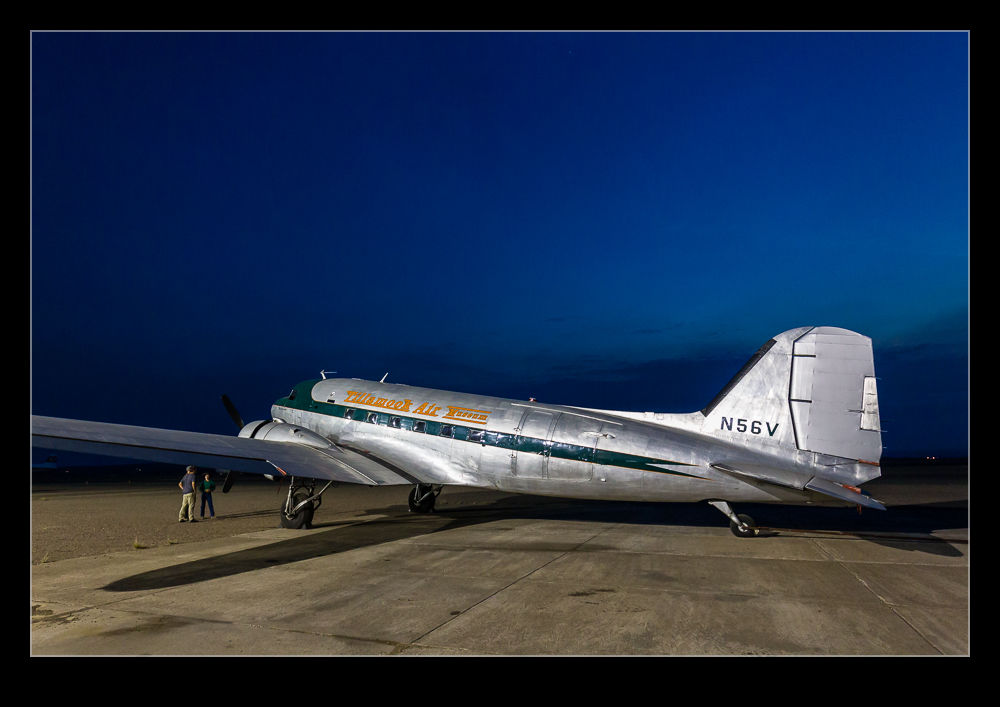 The aircraft sat on the ramp outside the museum hangar for the duration of my visit. The first evening we were there we had time to stroll around the ramp as the sun set. This resulted in some lovely lighting conditions. It was fun to see the DC-3 in close proximity to some later Douglas products. They shall be the subject of a later post.
The aircraft sat on the ramp outside the museum hangar for the duration of my visit. The first evening we were there we had time to stroll around the ramp as the sun set. This resulted in some lovely lighting conditions. It was fun to see the DC-3 in close proximity to some later Douglas products. They shall be the subject of a later post.
Bonanza Camera Ship
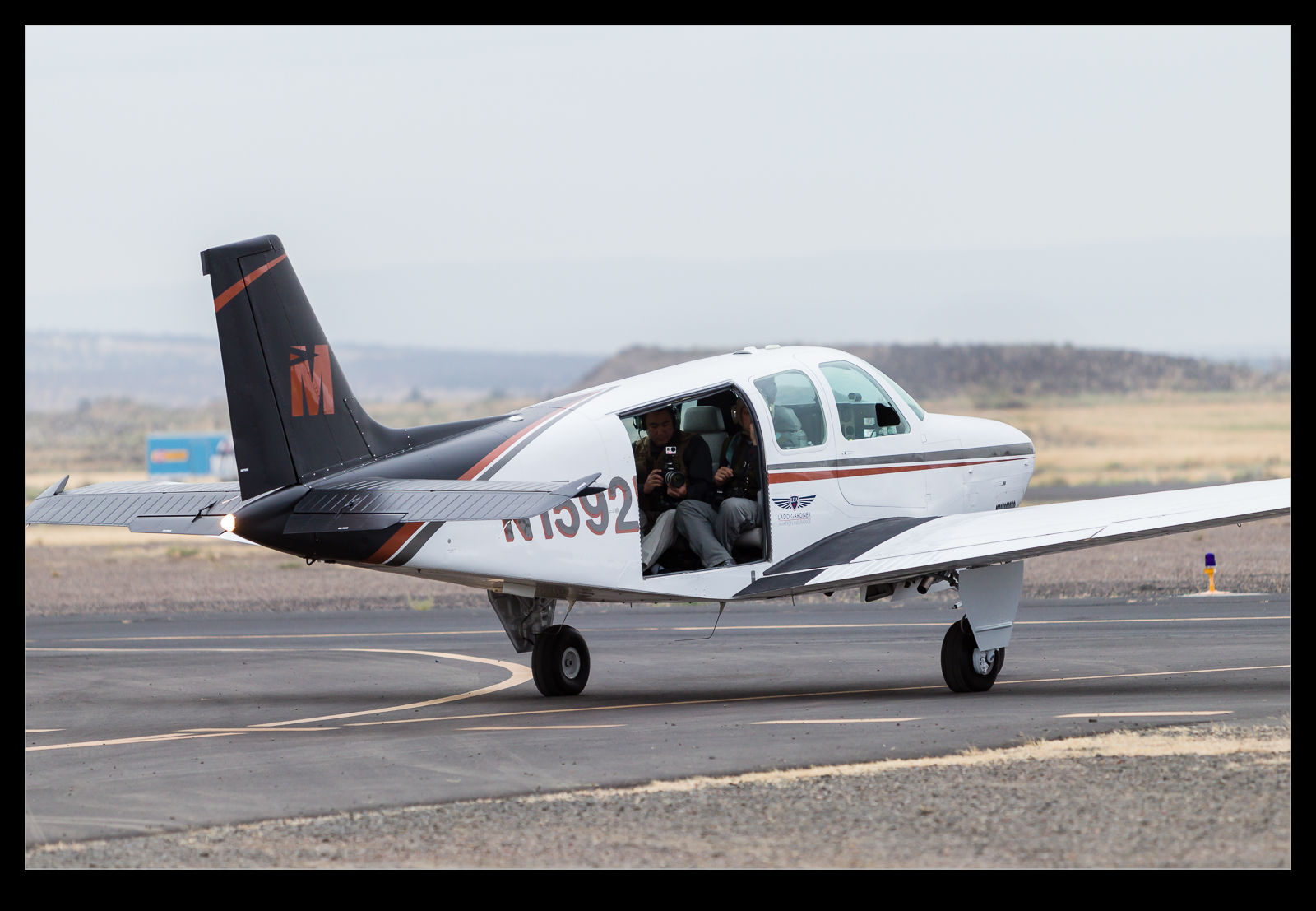 The camera ship for the majority of the photo missions at Madras A2AX (and all of the flights I undertook) was Scott Slocum’s Beech Bonanza. This is an aircraft which is certificates for flight with the doors removed. With the rearmost two seats removed, this provides a great location for two photographers to shoot back at the target aircraft. Both photographers wore harnesses that were strapped to the airframe.
The camera ship for the majority of the photo missions at Madras A2AX (and all of the flights I undertook) was Scott Slocum’s Beech Bonanza. This is an aircraft which is certificates for flight with the doors removed. With the rearmost two seats removed, this provides a great location for two photographers to shoot back at the target aircraft. Both photographers wore harnesses that were strapped to the airframe.
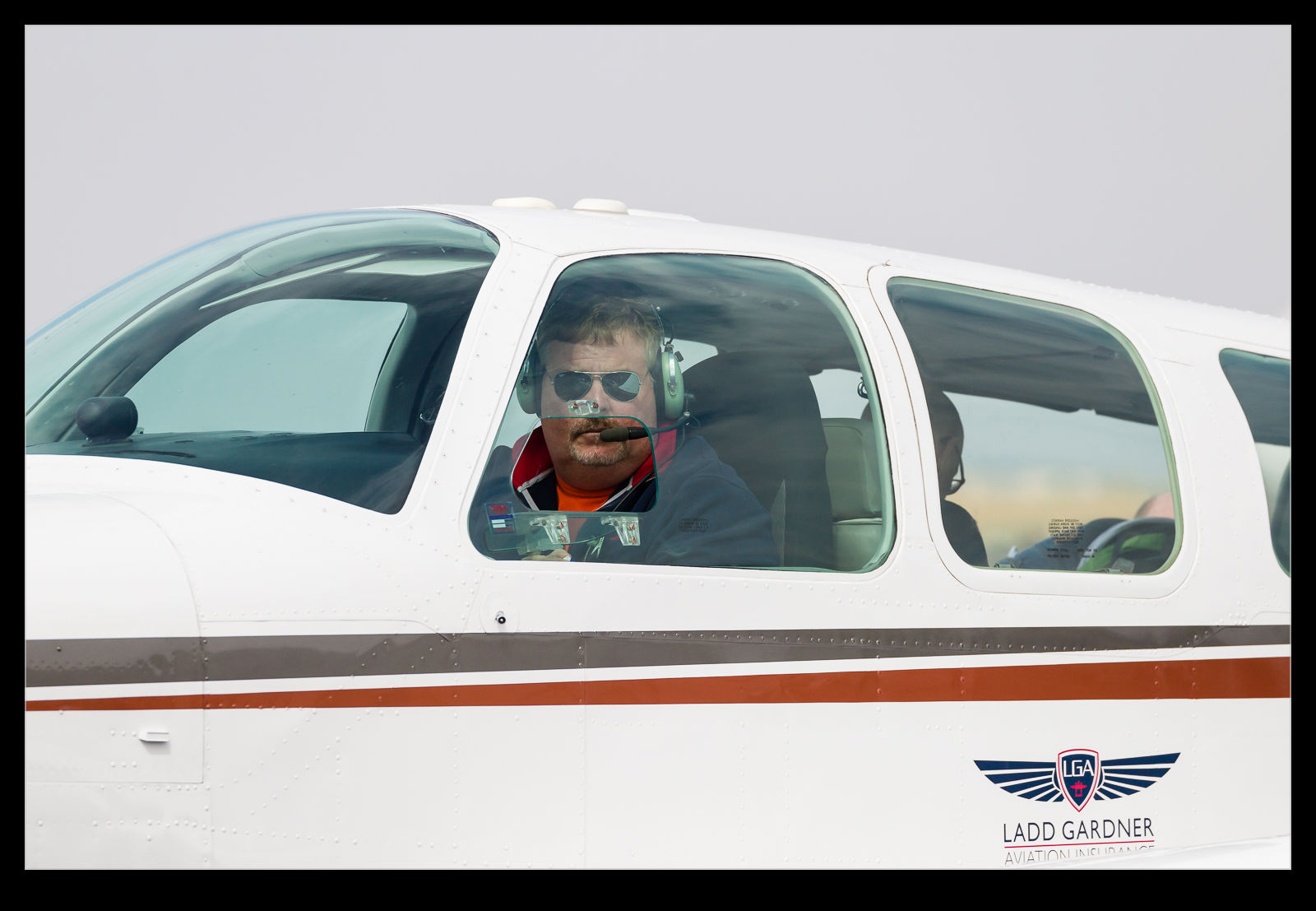 Once airborne, one person would sit on the floor by the door and the other would stay on the seats and shoot over the head of the other photographer. This system worked really well. During the turbulent flights, the person by the door was probably a touch more aware of how close they were to the door as we bounced around but it was all safely planned and a lot of fun. Full credit to the work Scott did as the photo pilot coordinating the aircraft as well as guiding us students.
Once airborne, one person would sit on the floor by the door and the other would stay on the seats and shoot over the head of the other photographer. This system worked really well. During the turbulent flights, the person by the door was probably a touch more aware of how close they were to the door as we bounced around but it was all safely planned and a lot of fun. Full credit to the work Scott did as the photo pilot coordinating the aircraft as well as guiding us students.
Redmond Airtanker Base
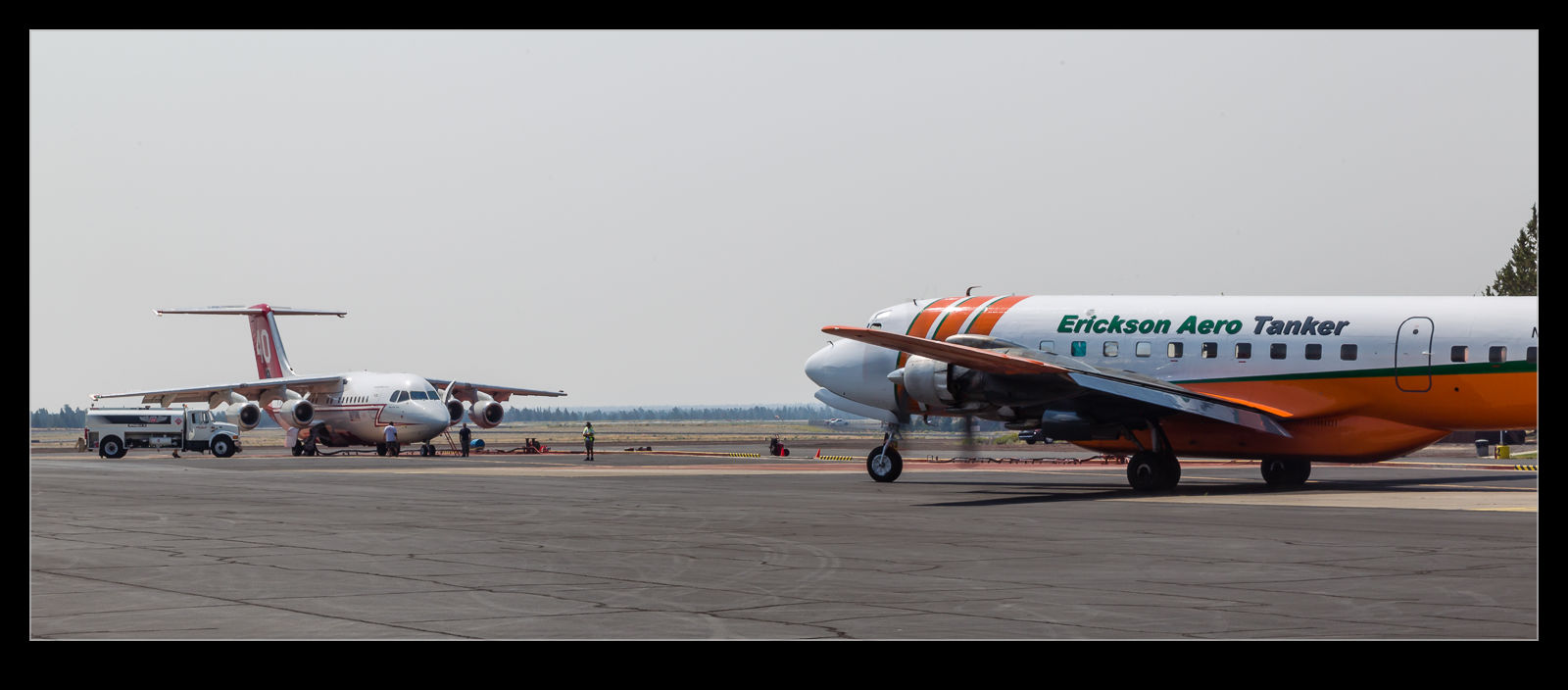 My trip to Madras involved flying in to Redmond airport, about half an hour south of Madras. Hayman and I came in on the same flight and shared a ride to Madras. As we drove out of the airport, something interesting caught my eye on the other side of the field so we did a little exporting before heading off. Redmond has a base for Airtanker operations in support of firefighting. The aircraft that I had first seen was a DC-7 that had been converted for tanker operations and was painted up in Erickson colors. It looked immaculate and the activity suggested it might be preparing to depart. With fires in the surrounding hills, there was plenty of work.
My trip to Madras involved flying in to Redmond airport, about half an hour south of Madras. Hayman and I came in on the same flight and shared a ride to Madras. As we drove out of the airport, something interesting caught my eye on the other side of the field so we did a little exporting before heading off. Redmond has a base for Airtanker operations in support of firefighting. The aircraft that I had first seen was a DC-7 that had been converted for tanker operations and was painted up in Erickson colors. It looked immaculate and the activity suggested it might be preparing to depart. With fires in the surrounding hills, there was plenty of work.
 While we waited for it to start up, a BAe146 tanker conversion landed and taxied in to the base. It was the first time I had seen one in person. Sadly the fencing around the base was rather touch to shoot through. Hayman made good use of the gap under the gates but my camera shape did not allow that. I had to make do with shooting through the fence where possible.
While we waited for it to start up, a BAe146 tanker conversion landed and taxied in to the base. It was the first time I had seen one in person. Sadly the fencing around the base was rather touch to shoot through. Hayman made good use of the gap under the gates but my camera shape did not allow that. I had to make do with shooting through the fence where possible.
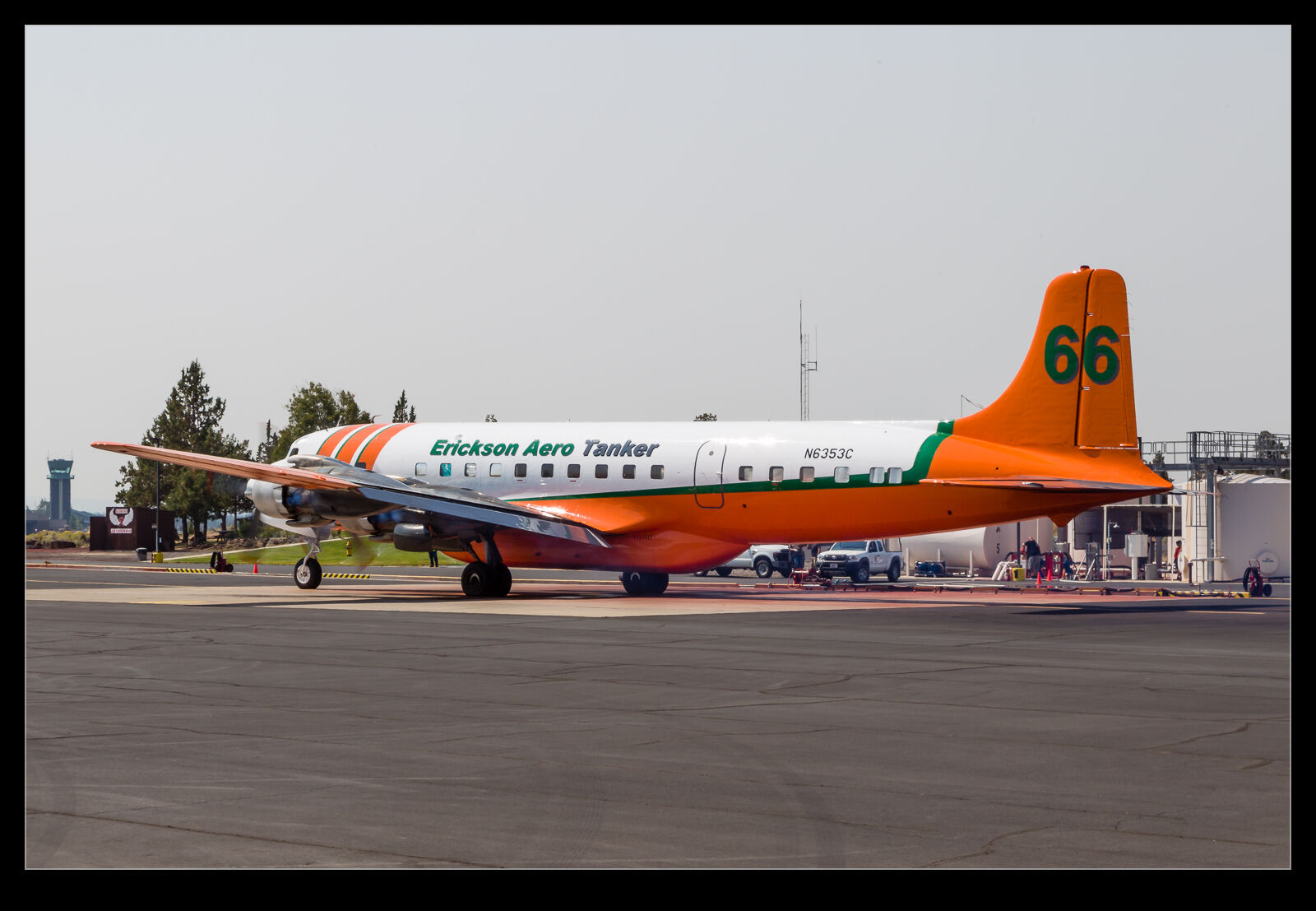 Shortly after the 146 came in, the DC-7 fired up and taxied out. With it gone, we figured it was time for us to continue on our way too.
Shortly after the 146 came in, the DC-7 fired up and taxied out. With it gone, we figured it was time for us to continue on our way too.
A2AX Workshop
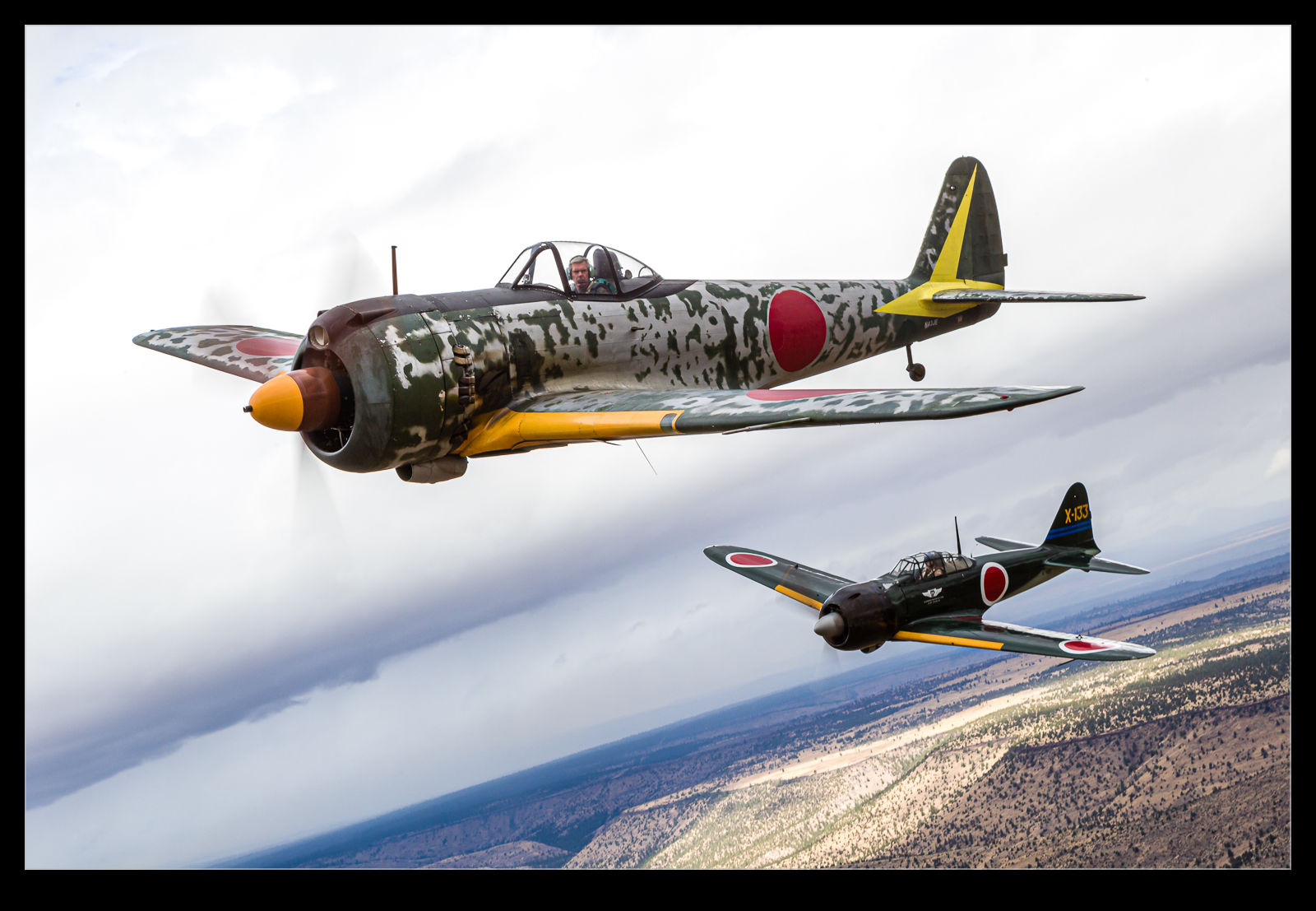 About a year ago I saw a ton of cracking images showing up online from friends of mine that had attended the Madras A2AX workshop. At the time I figured I needed to start panning on being there for the next edition of the workshop. It is run by Scott Slocum and Lyle Jansma at the Erickson Air Museum’s facility and their aircraft provided the subjects for the photo flights. Scott and Lyle were joined by Paul Bowen. Paul was not instructing but he did provide his own perspective and guidance on what we were working on and also could be relied on to show up with his camera whenever you were looking at your goofiest and to tell some hilarious tales of his various exploits.
About a year ago I saw a ton of cracking images showing up online from friends of mine that had attended the Madras A2AX workshop. At the time I figured I needed to start panning on being there for the next edition of the workshop. It is run by Scott Slocum and Lyle Jansma at the Erickson Air Museum’s facility and their aircraft provided the subjects for the photo flights. Scott and Lyle were joined by Paul Bowen. Paul was not instructing but he did provide his own perspective and guidance on what we were working on and also could be relied on to show up with his camera whenever you were looking at your goofiest and to tell some hilarious tales of his various exploits.
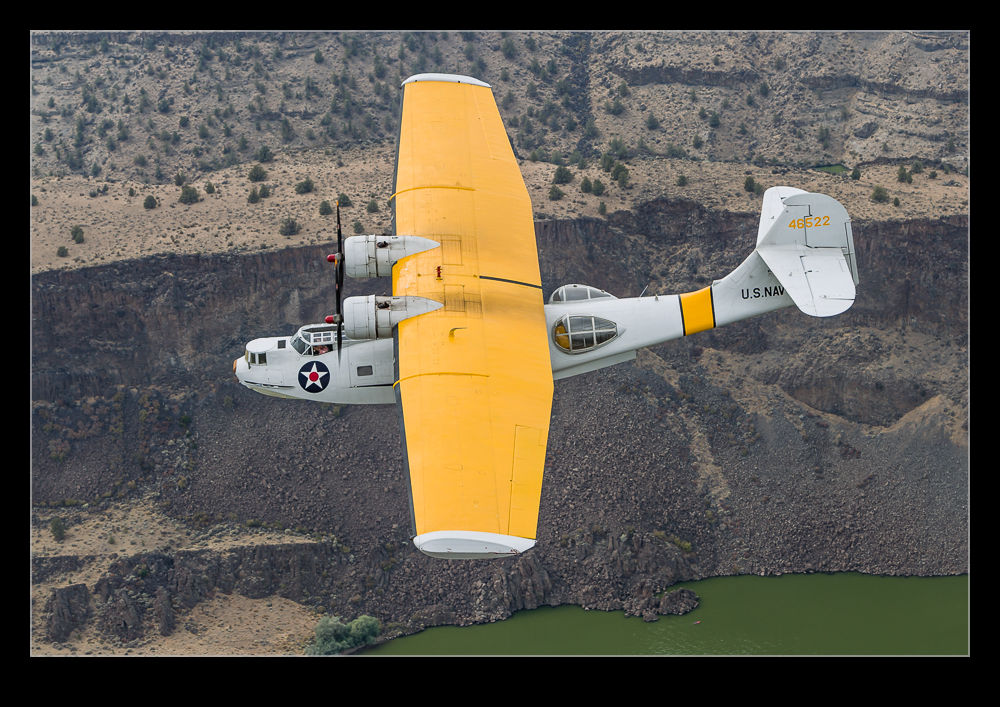 I met some familiar faces and made a whole bunch of new friends. Various hurdles were thrown in the way of the team due to weather and serviceability issues but they adapted well and the team were intent on having a good time whatever was going on. It was a fantastic weekend with some great learning opportunities and some beautiful aircraft to photograph. Here are a couple of samples of what we had to play with.
I met some familiar faces and made a whole bunch of new friends. Various hurdles were thrown in the way of the team due to weather and serviceability issues but they adapted well and the team were intent on having a good time whatever was going on. It was a fantastic weekend with some great learning opportunities and some beautiful aircraft to photograph. Here are a couple of samples of what we had to play with.
Kfirs
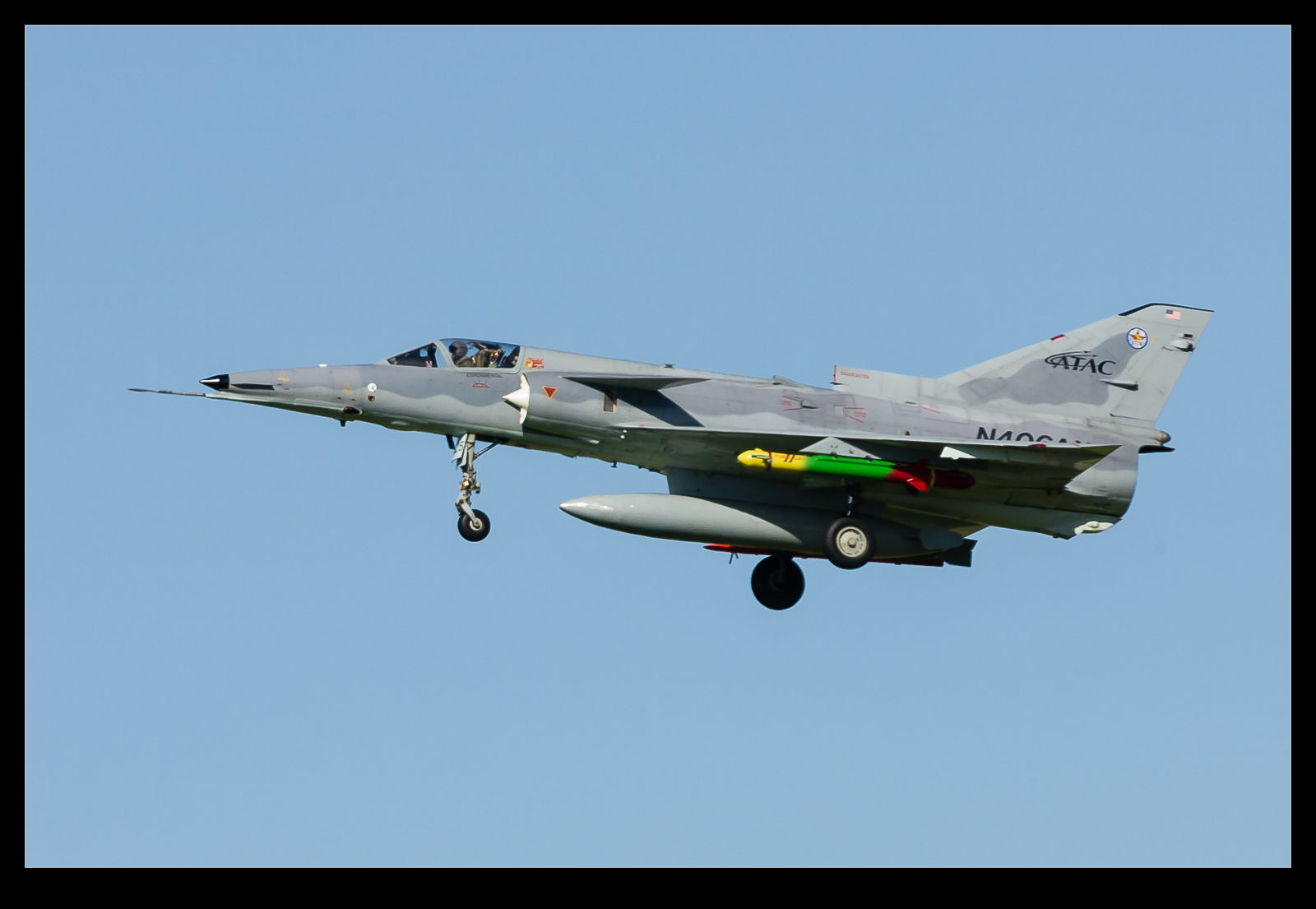 Time for another post on a specific military aircraft. This time it is one with an interesting history. The Israeli Air Force was a customer of Dassault’s Mirage aircraft and had good experience with it. However, Dassault/France declined to sell further aircraft to Israel. Instead, the Israelis decided to make their own version. A combination of covert acquisition of design drawings and the introduction of a new engine resulted in the creation of the Kfir.
Time for another post on a specific military aircraft. This time it is one with an interesting history. The Israeli Air Force was a customer of Dassault’s Mirage aircraft and had good experience with it. However, Dassault/France declined to sell further aircraft to Israel. Instead, the Israelis decided to make their own version. A combination of covert acquisition of design drawings and the introduction of a new engine resulted in the creation of the Kfir.
 During the 1980s, a number of Kfirs were supplied to the US Navy to be operated as aggressor aircraft under the F-21 designation. Their use in service was not terribly long but, once they were withdrawn, they were acquired by private companies to use in support roles for training. I have come across them a couple of times. One was at Pt Mugu in California when an example was shooting approaches. The other time was during a visit to NAS Fallon in Nevada where they were launching on training missions.
During the 1980s, a number of Kfirs were supplied to the US Navy to be operated as aggressor aircraft under the F-21 designation. Their use in service was not terribly long but, once they were withdrawn, they were acquired by private companies to use in support roles for training. I have come across them a couple of times. One was at Pt Mugu in California when an example was shooting approaches. The other time was during a visit to NAS Fallon in Nevada where they were launching on training missions.
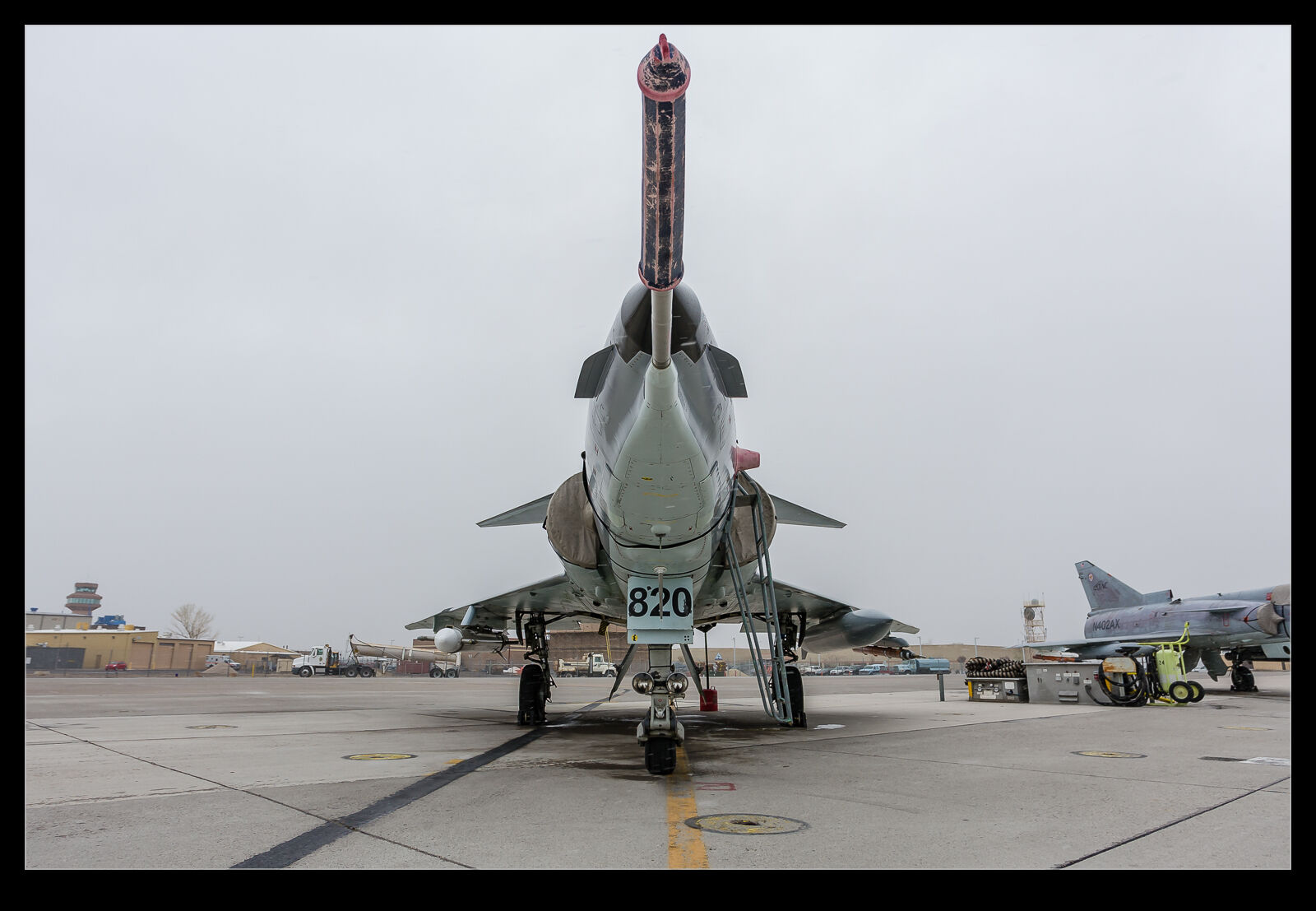 The Kfir is quite a mean looking aircraft. The original delta wing design has many good attributes but approach speed is not one of them and they really do seem to be motoring when they come down the approach. I imagine they will remain in service for a number of years to come so I hope to see more in due course.
The Kfir is quite a mean looking aircraft. The original delta wing design has many good attributes but approach speed is not one of them and they really do seem to be motoring when they come down the approach. I imagine they will remain in service for a number of years to come so I hope to see more in due course.
Sleek Looking 429
 While I don’t have any particular brand loyalty when it comes to helicopter manufacturers, I have never been a great fan of Bell products from an aesthetic position. They may be great machines but the fact the majority of the line look like pumped up Jet Rangers has never impressed me. Of course, a decent color scheme can go a long way to making something look better. The 429 is a chunky looking version of the basic shape and not a favorite for me but this example showed up at Boeing Field. Someone came up with a cool idea for this airframe. The gloss black paint with the color trims looks pretty cool to me. Good effort whoever did this.
While I don’t have any particular brand loyalty when it comes to helicopter manufacturers, I have never been a great fan of Bell products from an aesthetic position. They may be great machines but the fact the majority of the line look like pumped up Jet Rangers has never impressed me. Of course, a decent color scheme can go a long way to making something look better. The 429 is a chunky looking version of the basic shape and not a favorite for me but this example showed up at Boeing Field. Someone came up with a cool idea for this airframe. The gloss black paint with the color trims looks pretty cool to me. Good effort whoever did this.
Last of the Good Light
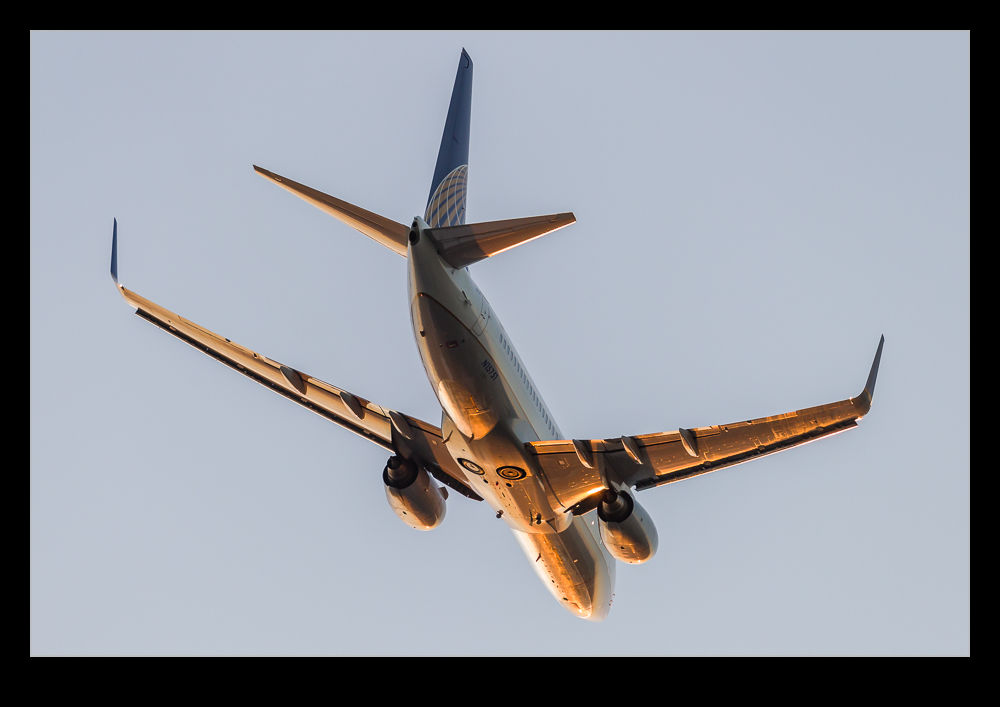 Getting some lovely evening light means the steady improvement in shooting conditions right up until the point when it all goes away. The light was on the nose of the departing jets so was good as they climbed out. Once they were passed our location, they were partially backlit but, since the sun was very low in the sky, the undersides of the jet were illuminated as it climbed. This provided some great options.
Getting some lovely evening light means the steady improvement in shooting conditions right up until the point when it all goes away. The light was on the nose of the departing jets so was good as they climbed out. Once they were passed our location, they were partially backlit but, since the sun was very low in the sky, the undersides of the jet were illuminated as it climbed. This provided some great options.
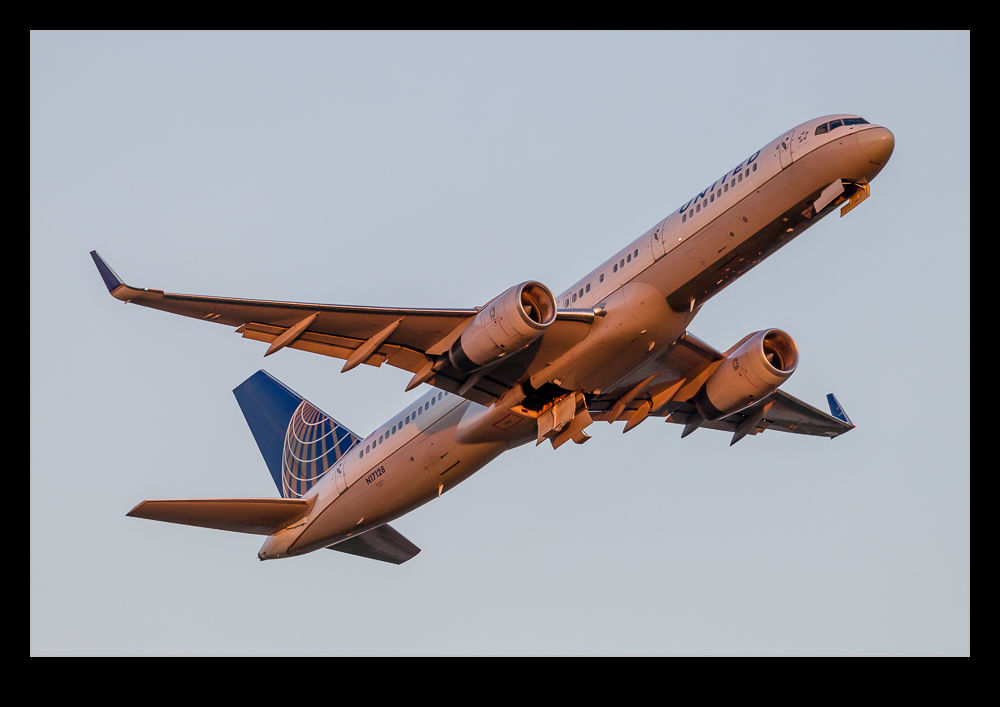 As the sun got even lower, the shade was beginning to be an issue for the front shots but the sky still provided a few nice options as the jets were heading away. The back of a plane might not always be the best side to shoot but, if the light is playing ball, it can be good. Of course, the transformation from great to gone is pretty quick so you make the best of it and then you can go home!
As the sun got even lower, the shade was beginning to be an issue for the front shots but the sky still provided a few nice options as the jets were heading away. The back of a plane might not always be the best side to shoot but, if the light is playing ball, it can be good. Of course, the transformation from great to gone is pretty quick so you make the best of it and then you can go home!
MiG29
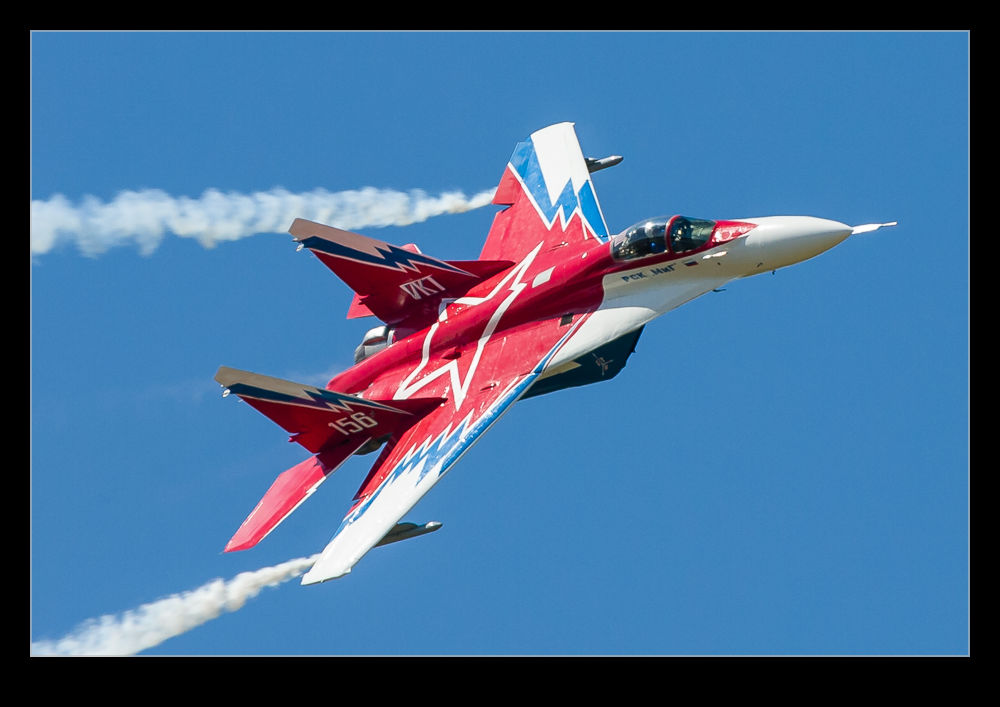 Continuing through my theme of looking at individual types, I came across some old pictures of the MiG-29. I figured I could get a post out of them so here we are. I saw quite a few of the Fulcrums in the late 80s and early 90s when they started traveling further afield. My first encounter was when the Russian Air Force brought a pair to Farnborough. They showed up again in a later year and then examples from other eastern bloc air forces started coming to the UK once the wall came down.
Continuing through my theme of looking at individual types, I came across some old pictures of the MiG-29. I figured I could get a post out of them so here we are. I saw quite a few of the Fulcrums in the late 80s and early 90s when they started traveling further afield. My first encounter was when the Russian Air Force brought a pair to Farnborough. They showed up again in a later year and then examples from other eastern bloc air forces started coming to the UK once the wall came down.
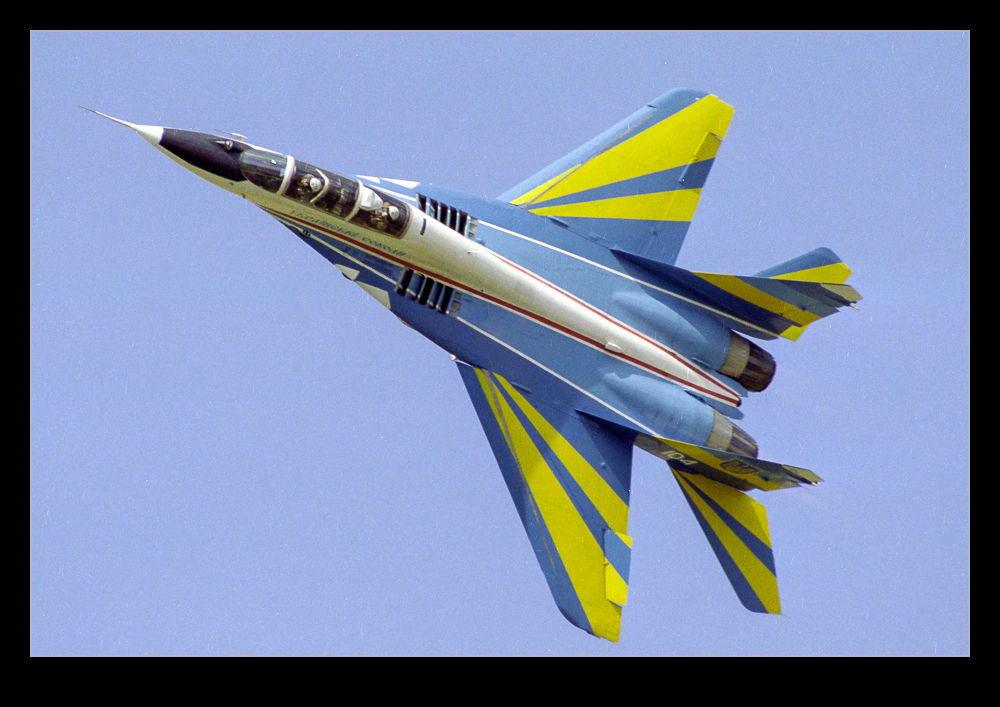 The quality of my film shots from those days is not great but you can see a bit of what was on offer. The Ukrainian aircraft showed up in some really cool colors. The best shots I have are of the MiG-29OMT which was a demonstrator that came to the UK in 2006 and displayed at RIAT. It had thrust vectoring nozzles to enhance maneuverability and put in a pretty impressive display.
The quality of my film shots from those days is not great but you can see a bit of what was on offer. The Ukrainian aircraft showed up in some really cool colors. The best shots I have are of the MiG-29OMT which was a demonstrator that came to the UK in 2006 and displayed at RIAT. It had thrust vectoring nozzles to enhance maneuverability and put in a pretty impressive display.
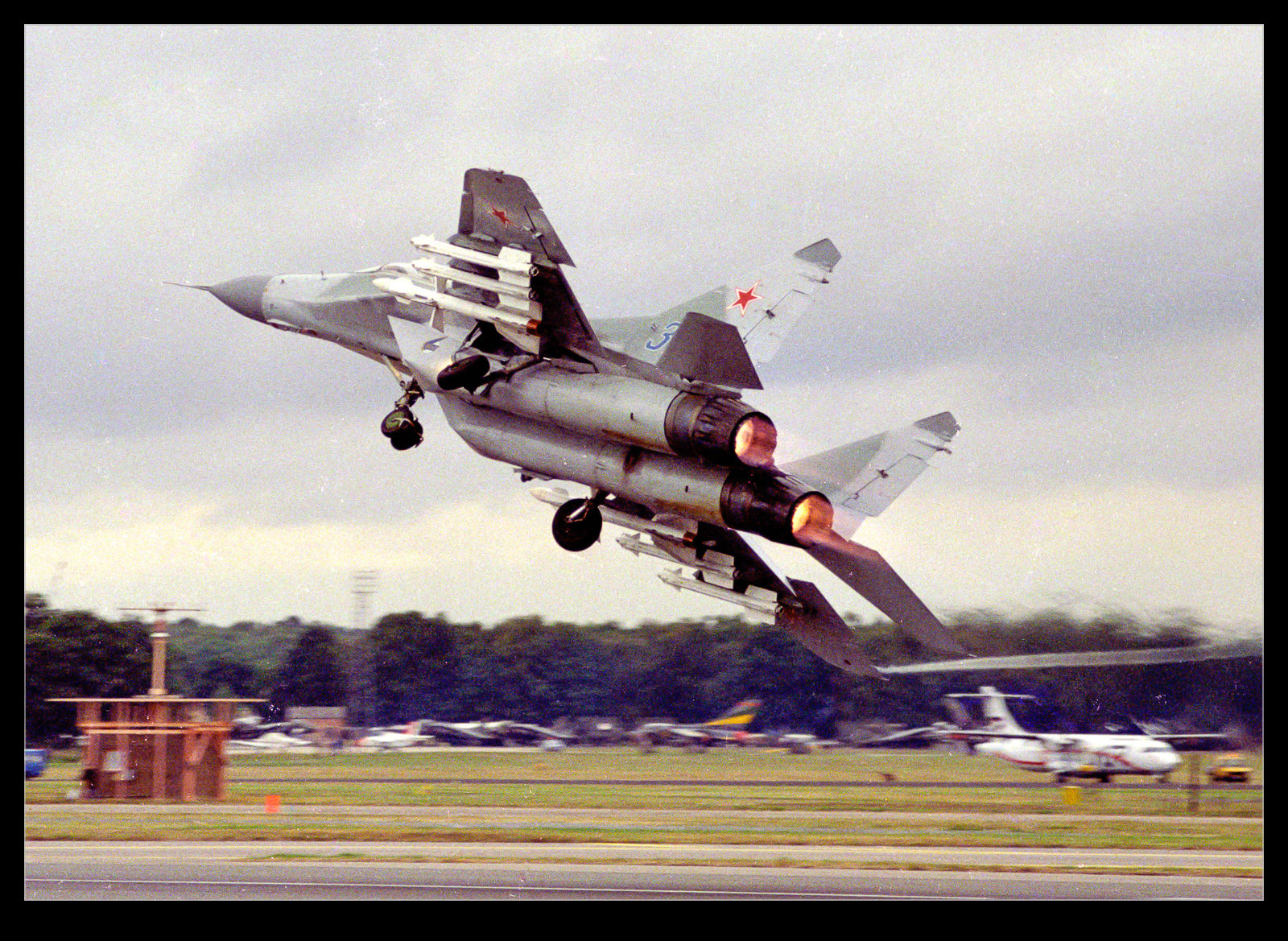 Lots of the operators today are starting to look at replacements. The age of some airframes along with the support issues are pushing them to renew while interoperability with NATO forces is another driver for change. I’m not sure how many more I will see flying although there are a good number in museums. There are a couple in private hands here in the states (one of which I saw being towed from across Paine Field) so they might be my best bet.
Lots of the operators today are starting to look at replacements. The age of some airframes along with the support issues are pushing them to renew while interoperability with NATO forces is another driver for change. I’m not sure how many more I will see flying although there are a good number in museums. There are a couple in private hands here in the states (one of which I saw being towed from across Paine Field) so they might be my best bet.
Is That a Crosswind?
 Unless you are on the center-line of the approach, you rarely get to see the aircraft directly head on. If there is a crosswind from your direction, though, you can get the planes pointing straight at you for a while. Sadly, this usually is while they are further out on the approach. If you are closer to the runway then you can get a shot that is more interesting because there is some ground to provide context to the angle of the plane. With a strong enough crosswind, you can get a head on shot until close to touchdown.
Unless you are on the center-line of the approach, you rarely get to see the aircraft directly head on. If there is a crosswind from your direction, though, you can get the planes pointing straight at you for a while. Sadly, this usually is while they are further out on the approach. If you are closer to the runway then you can get a shot that is more interesting because there is some ground to provide context to the angle of the plane. With a strong enough crosswind, you can get a head on shot until close to touchdown.
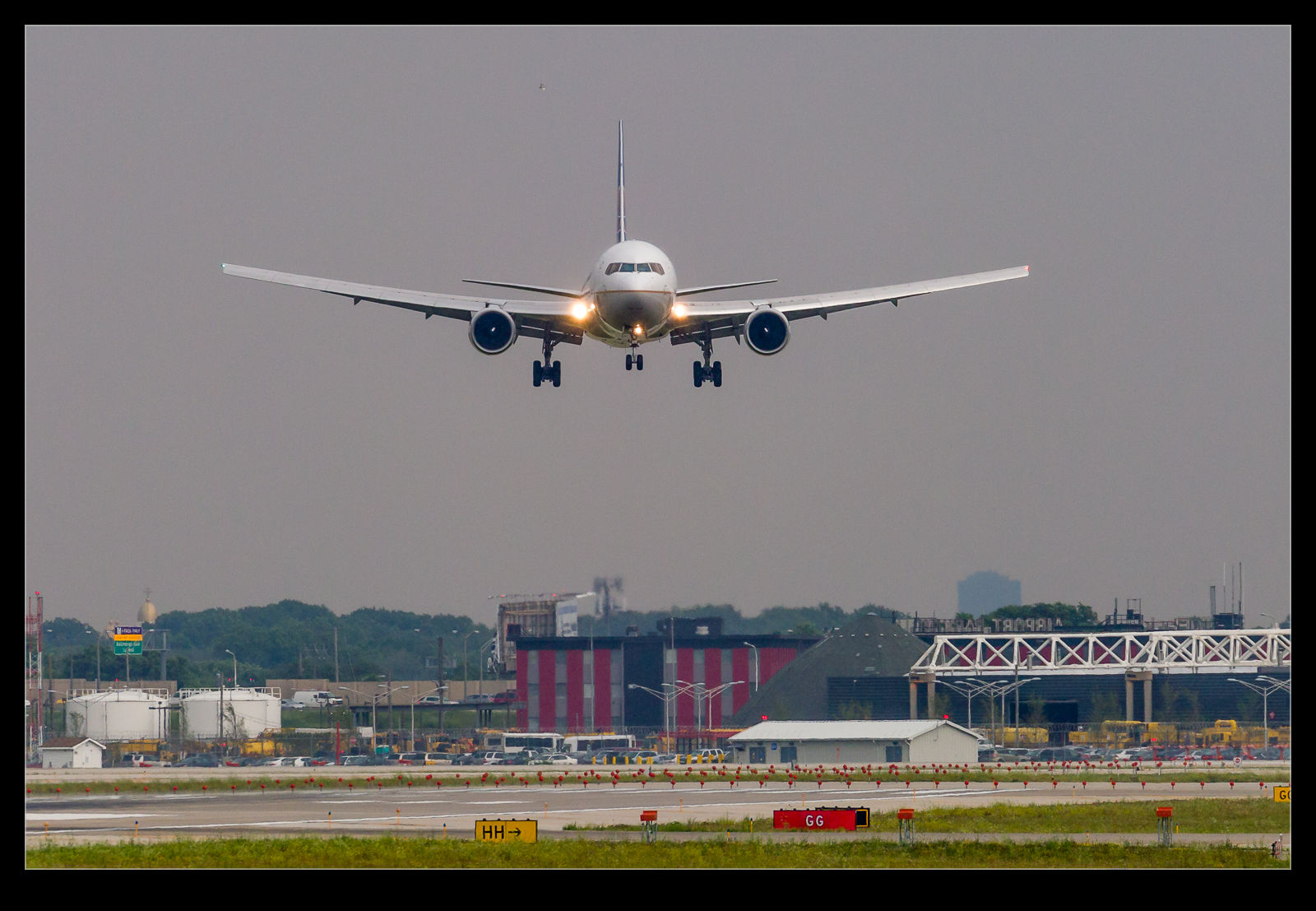 There is a location that I shot at once that is no longer available. It provided a good opportunity to get shots on a strong crosswind day. A Cathay Pacific 777-300ER demonstrates what I mean. A long airliner like a 777 emphasizes the effect even better when it swings around just before touchdown. The photos don’t demonstrate that as well as a video would but it did look cool. It wasn’t the only one either!
There is a location that I shot at once that is no longer available. It provided a good opportunity to get shots on a strong crosswind day. A Cathay Pacific 777-300ER demonstrates what I mean. A long airliner like a 777 emphasizes the effect even better when it swings around just before touchdown. The photos don’t demonstrate that as well as a video would but it did look cool. It wasn’t the only one either!
